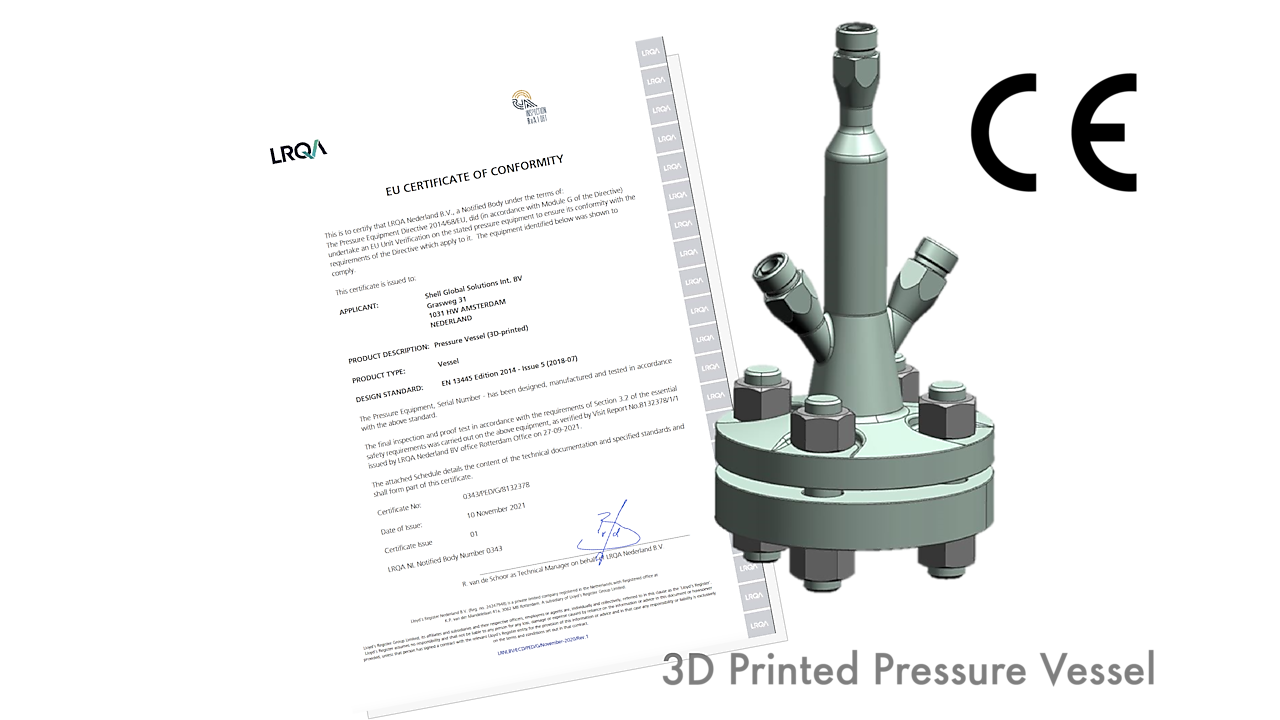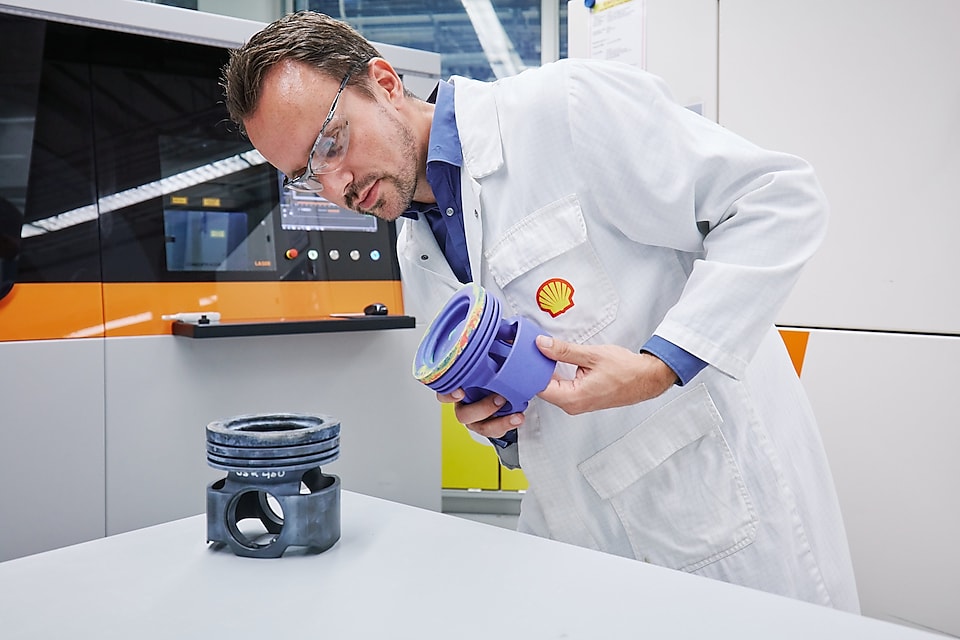Oil and gas giant Royal Dutch Shell has reportedly become the first company in Europe to obtain CE certification from a third-party authority for a part 3D printed in-house.
The part in question is a 3D printed pressure vessel that has been certified in accordance with the European Pressure Equipment Directive (PED), and is the culmination of a four-year project to demonstrate the application of 3D printing within the energy sector.
“This represents a significant milestone, not only for the additive manufacturing industry but also for the pressure equipment community,” said David Hardacre, Lead Specialist at independent assessment firm LRQA, formerly known as Lloyd’s register. LRQA acted as the notifying body for the certification and categorized the 3D printed vessel in PED Category III.
“This is the first CE Marked pressure vessel approved by an independent Notified Body.”

Shell’s offshore 3D printing goals
Shell began leveraging 3D printing for design prototyping and tooling purposes in 2011 with the installation of an in-house metal laser PBF system at its Technology Centre Amsterdam (STCA). The firm has since ramped up its 3D printing operations and turned its attention to additively manufacturing end-use spare offshore parts.
To this end, the company began trialing digital twin technology at its Singapore refinery in August 2020. When fully implemented in 2024, the system is expected to significantly boost Shell’s productivity while also improving reliability and safety.
Over the past couple of years, Shell has continued to increase its reliance on 3D printing and digital part management through a number of global additive manufacturing projects in the energy sector. For instance, the firm utilized the technology to achieve notable cost reductions in its offshore operations around Nigeria, and has also partnered with fellow energy firm Baker Hughes to develop on-demand 3D printed impellers that could reduce delivery times by up to 75 percent.
Most recently, Shell worked with manufacturing service provider 3D Metalforge to supply 3D printed heat exchanger parts to one of its offshore facilities. The limited run of specialized mini piping has helped shell minimize its equipment downtime by reducing the part’s likelihood of failure.
Shell and LRQA have worked closely together for some time, with Shell’s STCA awarded a best practice qualification for its 3D printing facility by the assessment firm back in 2019. Now, the companies have met another significant milestone together with the CE certification of the first in-house 3D printed part by a European company.
“The journey taken together by Shell and LRQA has been technically challenging but immensely rewarding,” said Hardacre. “We have now established a path for anyone to certify additively manufactured pressure equipment under the PED.”

Achieving CE certification
Designed for pressures up to 220 bar, the pressure vessel was 3D printed using Shell’s PBF 3D printing capabilities at its Energy Transition Campus in Amsterdam.
According to Shell, the certification from LRQA is an important milestone for the energy sector as there are, to date, no legislation or global standards in place specifically for 3D printed pressure retaining parts. As a result, until now the use of 3D printed pressure equipment has generally not been permitted at industrial sites.
The four-year project to develop the pressure vessel was born out of a desire by Shell to gather research data to help improve the energy sector’s trust in 3D printing as a means of sourcing “just in time” spare parts, instead of holding large and costly physical inventories.
Through gaining CE certification for the pressure vessel, the company hopes its work will provide valuable data points and insights to prompt further discussions with standards bodies to scale up the use of 3D printing for pressure equipment.
“Shell will continue to be a leader in the research and development of additive manufacturing,” said Angeline Goh, 3D Printing Technology Lead at Shell. “We collaborate with multiple partners globally to grow our own capabilities and the scope application of 3D printing in the energy sector.
“We now have the knowledge to also help our partners certify their printed parts for commercialization.”
Subscribe to the 3D Printing Industry newsletter for the latest news in additive manufacturing. You can also stay connected by following us on Twitter and liking us on Facebook.
Looking for a career in additive manufacturing? Visit 3D Printing Jobs for a selection of roles in the industry.
Subscribe to our YouTube channel for the latest 3D printing video shorts, reviews and webinar replays.
Featured image shows Shell has received CE certification for its 3D printed pressure vessel. Image via Shell.



